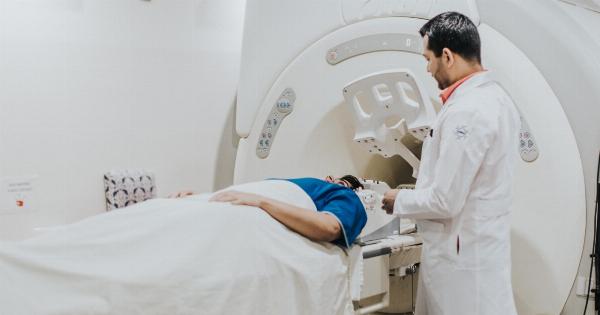In the field of medicine, accurate assessment of patient mortality risk is an essential task that helps in making clinical decisions and developing treatment plans.
Traditionally, physicians rely on their clinical expertise and experience to estimate the risk of mortality for their patients. However, recent advancements in technology and the availability of large datasets have given rise to the development of algorithms that can deduce the risk of mortality with high accuracy.
This article explores how algorithms outperform physicians in assessing the risk of mortality and discusses the potential benefits and challenges associated with their implementation.
The Role of Algorithms in Mortality Risk Assessment
Mortality risk assessment algorithms utilize machine learning techniques to analyze large amounts of patient data, including medical records, laboratory test results, and imaging studies.
By processing this wealth of information, algorithms can identify patterns and factors that contribute to increased mortality risk. The algorithms can then generate a risk score that provides a quantified measure of the likelihood of mortality for a given patient.
Advantages of Algorithmic Mortality Risk Assessment
1. Increased Accuracy: Algorithms have the potential to provide more accurate risk assessments compared to physicians.
By considering a broader range of patient data and accessing large-scale databases, algorithms can factor in multiple variables simultaneously and identify complex patterns that may not be evident to a human expert. This allows for a more comprehensive and precise assessment of mortality risk.
2. Consistency: Algorithms are not influenced by subjective factors such as mood, fatigue, or personal biases. As a result, they can provide consistent and unbiased risk assessments across different clinicians and healthcare settings.
This consistency helps in reducing variation in mortality risk assessments and improves overall patient care.
3. Efficiency: Algorithms can process large amounts of patient data quickly and provide risk assessments in a timely manner.
This efficiency allows physicians to have access to up-to-date and accurate information, which can significantly impact clinical decision-making and treatment planning.
Challenges and Limitations
While algorithmic mortality risk assessment offers numerous advantages, there are also challenges and limitations that need to be addressed:.
1. Data Quality: The accuracy and completeness of the patient data used by algorithms play a crucial role in the reliability of risk assessments. Inaccurate or incomplete data can lead to erroneous predictions and affect patient outcomes.
Efforts must be made to ensure the integrity and quality of the data used by the algorithms.
2. Interpretability: Despite their high accuracy, many machine learning algorithms are considered black boxes, meaning that their internal workings are not easily interpretable by humans.
This lack of interpretability makes it challenging for physicians to understand why certain risk assessments are made, which can hinder trust and acceptance of algorithmic predictions.
3. Ethical Concerns: The use of algorithms for mortality risk assessment raises ethical concerns related to patient privacy, data security, and potential biases.
Algorithmic models might inadvertently perpetuate existing biases if the training data is biased or reflect prejudices. It is crucial to address these ethical concerns and develop algorithms that are fair and unbiased.
Integration into Clinical Practice
The successful implementation of algorithmic mortality risk assessment in clinical practice requires a multidisciplinary approach.
Healthcare organizations should collaborate with data scientists, clinicians, and policymakers to address the challenges associated with adopting these algorithms. Additionally, efforts should be made to enhance data interoperability, establish clear guidelines for algorithm development and validation, and educate healthcare professionals on the benefits and limitations of using algorithms in risk assessment.
Benefits for Patients and Healthcare Providers
1. Improved Patient Outcomes: By accurately assessing mortality risk, algorithms can contribute to early intervention, optimized treatment plans, and improved patient outcomes.
Timely identification of patients at high risk of mortality allows for personalized and targeted interventions, enhancing the chances of successful outcomes.
2. Reduced Healthcare Costs: Early identification and intervention in high-risk patients can help prevent complications and hospital readmissions, resulting in cost savings for healthcare systems.
Moreover, accurate risk assessment enables the allocation of healthcare resources in a more efficient and cost-effective manner.
3. Physician Support: Algorithmic risk assessment can act as a valuable decision support tool for physicians.
By providing objective and evidence-based risk scores, algorithms can assist physicians in making informed clinical decisions, reducing diagnostic uncertainty, and guiding treatment strategies.
The Way Forward
To unleash the full potential of algorithmic mortality risk assessment, further research and development are required.
Collaboration between medical professionals, data scientists, and policymakers is crucial to fine-tune algorithms, ensure data integrity, and establish regulatory frameworks. Additionally, clinical trials and validation studies are necessary to demonstrate the efficacy and reliability of these algorithms in real-world healthcare settings.
As the field continues to evolve, it is essential to strike a balance between the use of algorithms and the expertise of healthcare professionals, ultimately leading to improved patient care and outcomes.



























